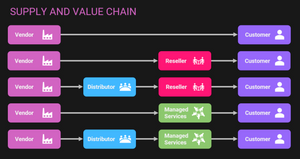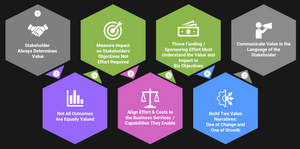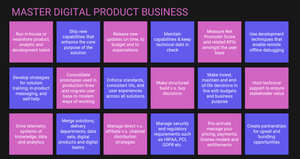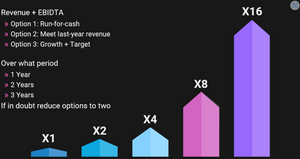In "Is your idea management system helping you create impact and ship value? (P1)", we explored the science of driving an effective work prioritisation in a complex, high-touch, multi-dimensional, challenging environment:
- Set a common understanding of the purpose, concepts and terminology on which an idea management system is built.
- Explored how to handle ideas when everything is essential or critical, and you experience conflicting messaging/priorities.
In this Part 2, we help you:
- Evaluate your current idea management system; is it working/can it work better?
- Deal better with increasing complexity as your business grows and evolves.
- Develop a formula on which to enable yourself and your team to evaluate backlog content as a core competency.
Evaluate backlog content as a core competency
Backlog management deals with evaluating work requests to:
- Prioritise what is truly urgent for the business today.
- Establish the foundations on which the company will continue thriving tomorrow.
- Determine which efforts need to stop.
- Make decisions on where to increase or decrease investments.
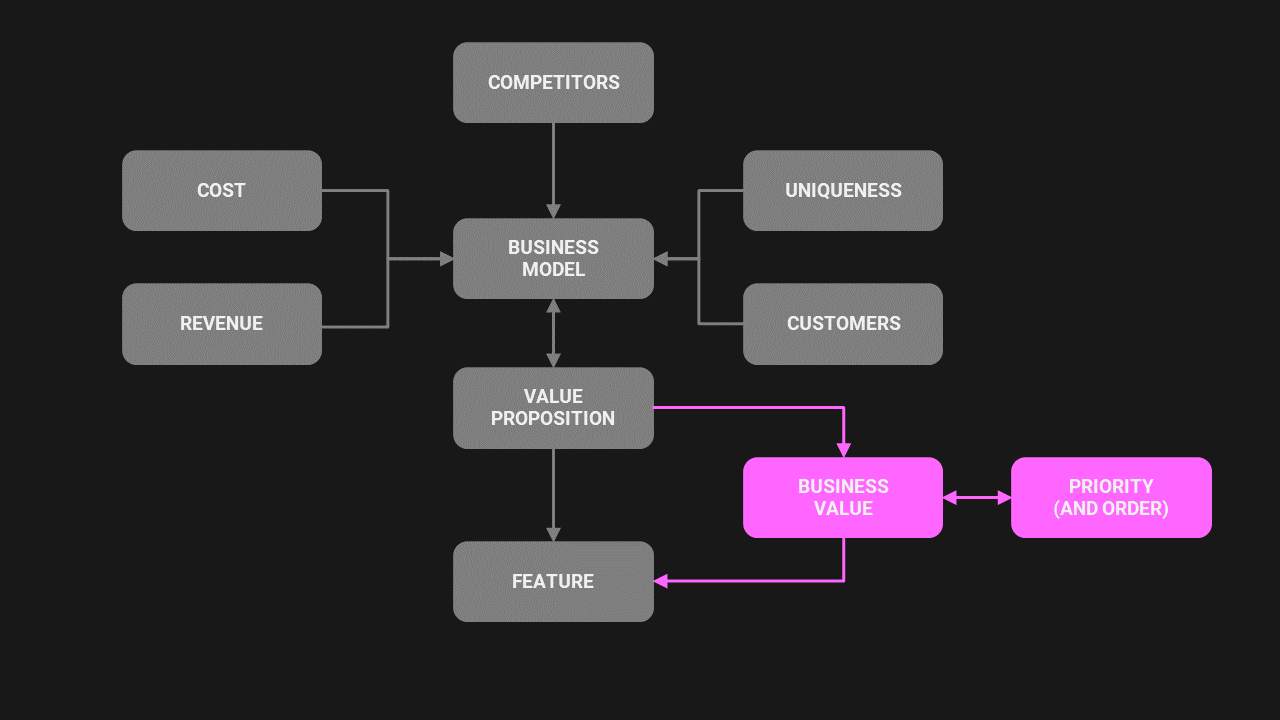
There are over 138 feature prioritisation frameworks that you can use to structure a work request system that helps you identify which work should be done first in line with your business mandate and investment thesis.
"Intentional, structured Backlog management is a core competency for success."
As a result of these prioritisations, resources can be mobilised and allocated to deliver the work needed to advance, scale, and grow confidently.
Signs of a deteriorating or struggling process
Assuming a reasonably staffed and stable delivery team, typical business symptoms of a sub-optimal prioritisation or Backlog Management process include:
- Unable to correlate returns to investment in development capacity.
- Customers are angry and leaving.
- Partners are recommending alternative solutions.
- Allocating additional spending in development capacity feels like an exercise in hope.
- Delaying release dates.
- Unable to launch the next-generation product.
- Difficult to correlate costs to ROI, outcomes and customer value.
- Reducing investment confidence.
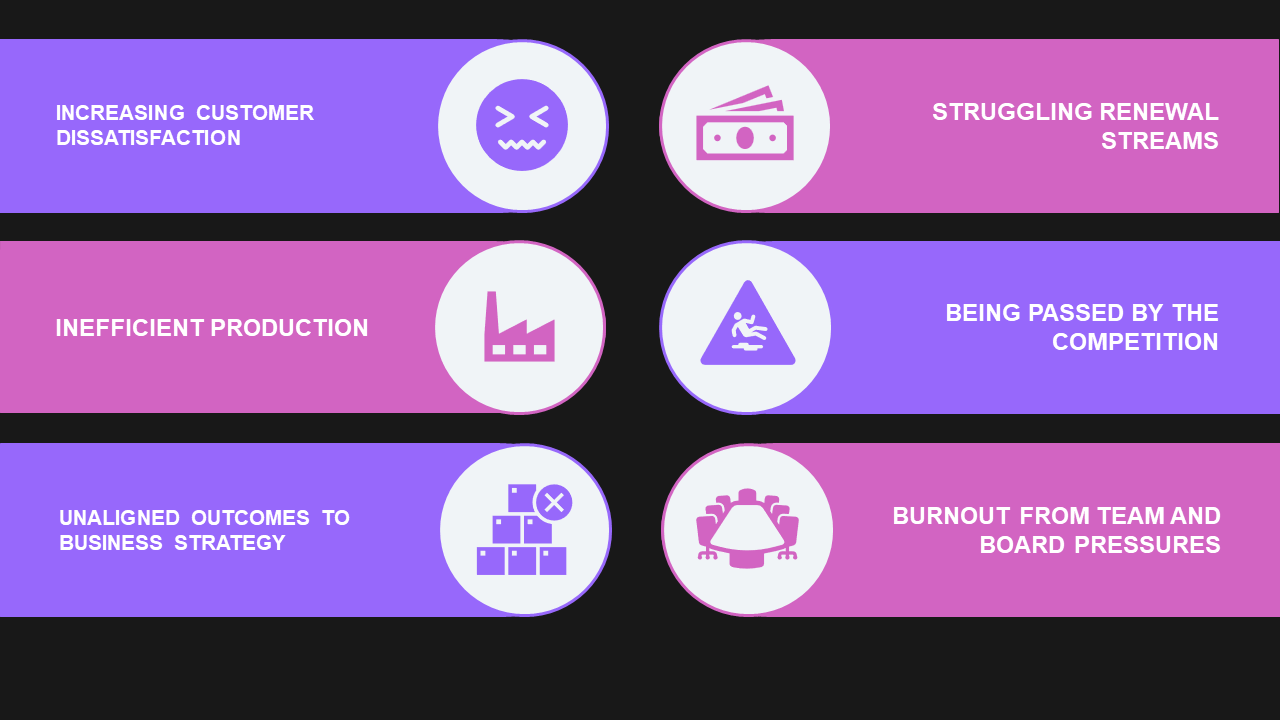
Digging deeper, you will tend to find:
- Backlogs have become an ever-growing collection of thoughts, lousy ideas, tasks and requests.
- Work items lack the necessary detail to be actionable
- Requests are lost and forgotten
- Roadmaps are hidden to avoid criticism and contribution.
- Work priorities are vague and unaligned with the business narrative and mandate priorities.
- Stakeholders struggle to understand the strategy behind work and capabilities shipped.
"When your prioritisation process fails, you fail to realise the required business outcomes, are left surprised and are let down."
Going deeper: Root causes of a struggling process
Many factors can disturb your team's ability from doing a great job:
- Lack of ownership of the backlog management process.
- Wrong people in the team.
- Leadership imposes decisions without embracing multi-faceted data.
- People who are afraid of making a wrong decision.
- People who struggle to make types of decisions (technical vs business).
- Managing separate backlogs depending on who you are talking to.
- Company grew and requires higher levels of maturity in the way business matters are operated.
- Tendency to want to please everyone.
- High staff turnover or absenteeism.
- Legacy technologies, technical complexity, and depth of technical debt.
- Team requires more experienced leadership.
- Inappropriate tooling and methodologies (that are not fit for purpose).
- Politics.
- Decisions are based on opinions that are not supported by aggregated data and market research.
- Focus on features that are not aligned to the value themes of priority to the business.
"As a leader in your organisation, you can cope with helping people grow."
"You also own the full selection of the tooling and methodologies you use for roadmap maintenance and work prioritisation."
Left unchecked, the costs of a mismanaged backlog process can become irreparable and lead to the end of life of the product line in question and potentially the business in its entirety.
Deal with increasing complexity as you grow and evolve
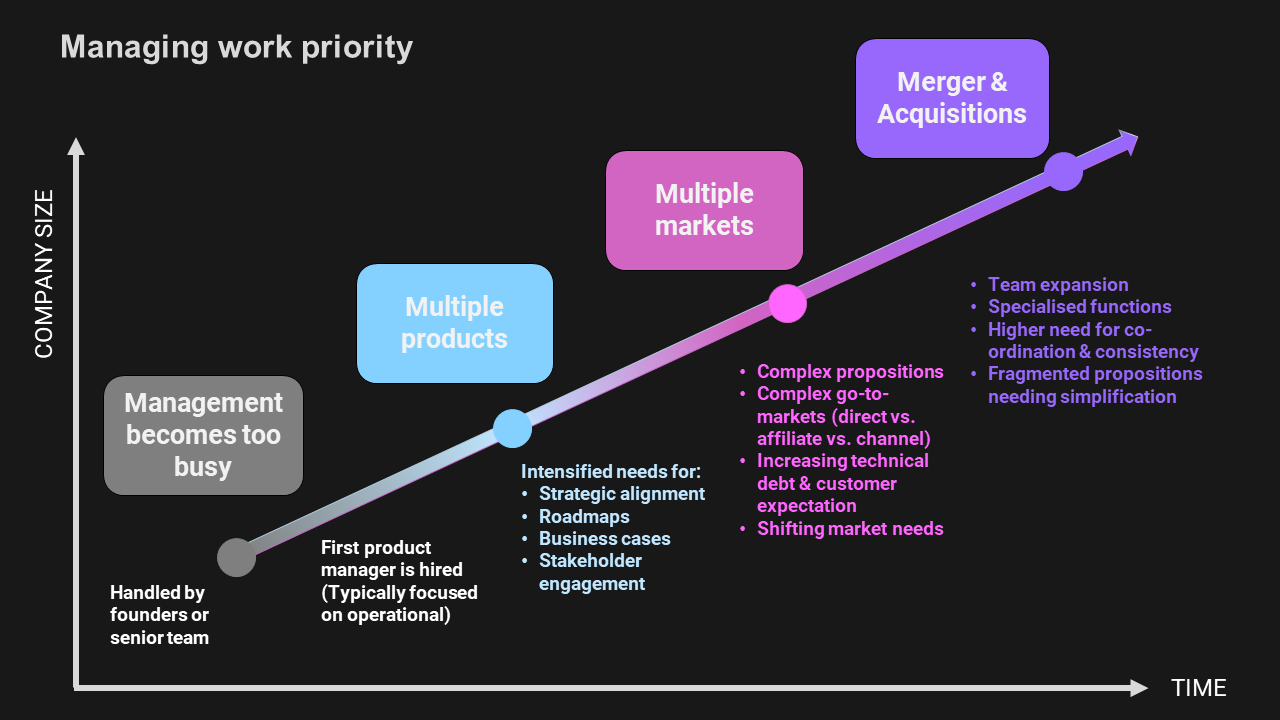
The criticality of a well-oiled backlog management process intensifies as:
- Product adoption increases.
- Different people are engaged to prioritise work correctly.
- Business go-to-market capabilities grow in complexity and ability to reach new and broader markets.
- Sales are made direct and through a channel.
- New products are introduced into the mix.
- Business commitments intensify (e.g. covenants).
- Business scales needing higher operational maturity (e.g. startup > scaleup > external investment > IPO).
- Market expectations evolve.
- Stakeholders demand more significant involvement in prioritisation.
- Partners expect transparency and predictability.
- Mergers & Acquisition activities kick in.
It is essential your team and environment maturity is continuously upskilled and improved to match the maturity stage of your business.
Do once repeat many frameworks
We also want your resulting processes and tools to support any person performing backlog management in your organisation to do this consistently and repeatedly across all managed products.
In a multi-person team, you want all team members to approach and prioritise work similarly.
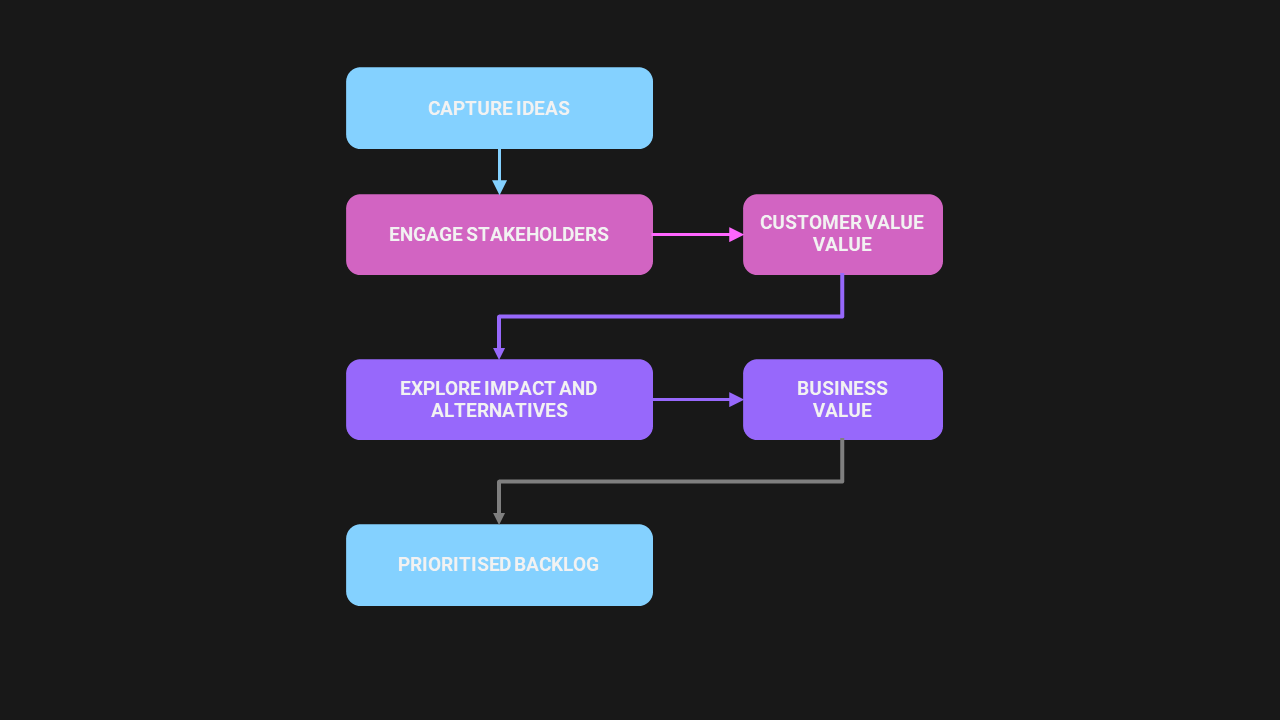
This consistency in cross-functional engagement, tooling, and the process will enable transparency, predictability, and elimination of surprises to stakeholders.
This organised approach will allow you to drive higher engagement and satisfaction in how your teams work and advance.
Wrapping up
Prioritisation is not a simple exercise. It involves a lot of management of people and issues across various dimensions and challenges.
Use these posts ("Is your idea management system helping you create impact and ship value? (P1)" and this post) to identify whether your system can be upgraded or benefit from an injection of higher maturity.

